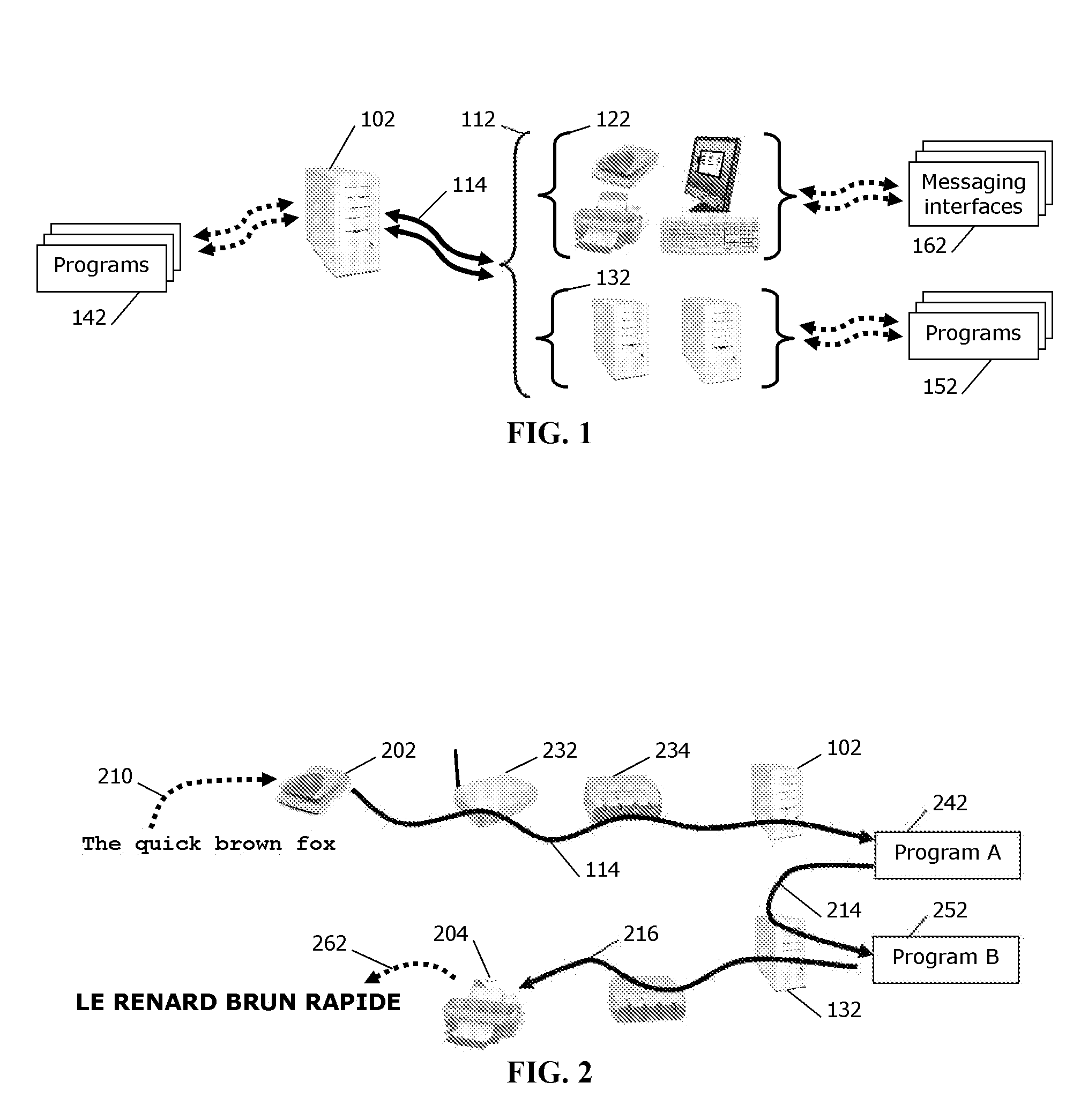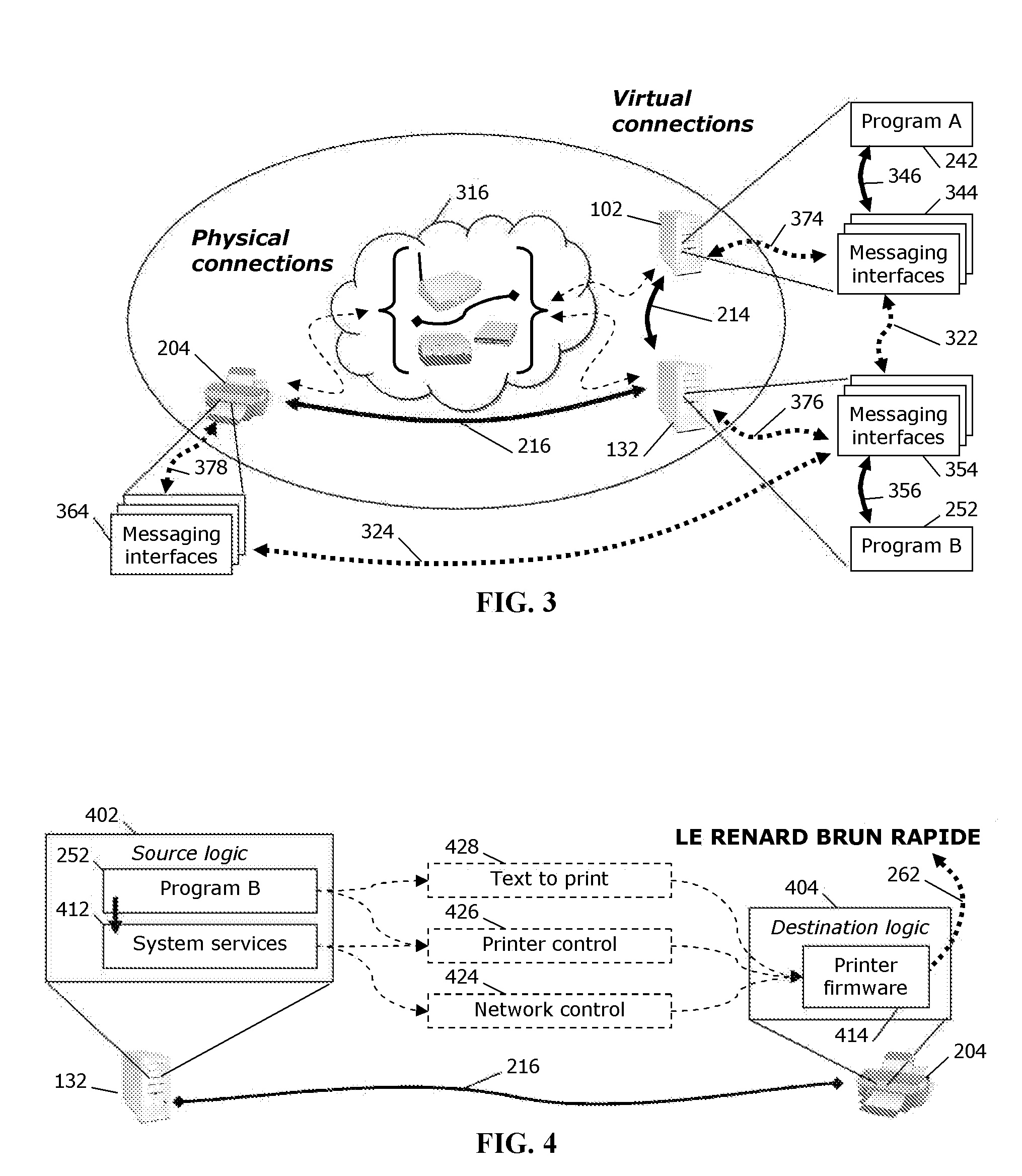Message conduit systems with algorithmic data stream control and methods for processing thereof
a message conduit and data stream technology, applied in the field of digital computer input/output data transfer and transformation, can solve the problems of high complex and costly changes in data communication applications, and the evolution of computer systems, and achieve significant implementation and maintenance costs, and facilitate the design and construction of programs.
- Summary
- Abstract
- Description
- Claims
- Application Information
AI Technical Summary
Benefits of technology
Problems solved by technology
Method used
Image
Examples
Embodiment Construction
[0059]Certain embodiments of the present invention are described below, with reference to FIGS. 6A through 18B. FIG. 6A illustrates an example of a single algorithmic conduit. FIGS. 6B and 7 illustrate how one or more such algorithmic conduits may be supported by one embodiment of an inventive message conduit hub system. FIGS. 8A through 12C illustrate two representative data communication applications that exemplify embodiments and applications of the present invention, and in which utilization of the invention can save effort, reduce cost, and improve functionality. Specifically, FIGS. 8A through 10B illustrate a retail sales system and the implementation of one embodiment of the invention thereto, while FIGS. 11A through 12C show a web-based application and, similarly, the incorporation of an embodiment of the invention thereto. FIGS. 13 through 18B describe implementation of specific embodiments in greater detail.
Terminology
[0060]In describing the present invention, the followin...
PUM
 Login to View More
Login to View More Abstract
Description
Claims
Application Information
 Login to View More
Login to View More - R&D
- Intellectual Property
- Life Sciences
- Materials
- Tech Scout
- Unparalleled Data Quality
- Higher Quality Content
- 60% Fewer Hallucinations
Browse by: Latest US Patents, China's latest patents, Technical Efficacy Thesaurus, Application Domain, Technology Topic, Popular Technical Reports.
© 2025 PatSnap. All rights reserved.Legal|Privacy policy|Modern Slavery Act Transparency Statement|Sitemap|About US| Contact US: help@patsnap.com



